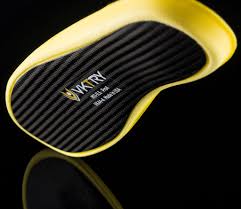The Best Insoles for Preventing Running Related Injuries
What are the best insoles for running injury prevention?
The softer, the better, you might say. But is extra cushioning actually the best approach for preventing injuries?
Recent research indicates that more cushioning in our shoes and insoles is actually not effective for preventing running-related injuries.
In fact, there’s evidence that too much cushioning may even increase the risk of injuries for runners.
In contrast, research has demonstrated that energy returning insoles and textured insoles may be the best way to go to better control ground impact forces.
This article suggests three of the best running insoles and how each may prevent running-related injuries. You’ll discover their benefits, features, and more. Armed with this knowledge, you’ll be better informed to choose the best insoles for runners.
FIRSTLY, DO YOU EVEN NEED RUNNING INSOLES?
No matter how much you spend on your running shoes, they more often than not seem to come with a cheap insole. Usually it’s just a thin sock liner that doesn’t add much comfort or support. So a question that many runners ask is, “Do I even need insoles in my running shoes?”
The answer depends on several things. Let’s examine a couple of them.
FOOT TYPE.
The need for running insoles is greatly dependent on foot-type and foot strength. The most common foot types are high arch, neutral and flat foot. These are intended to not be medical terminology but to get start a general idea of the various foot types and the impact of each.
The flat foot / low arch may often be associated with over-pronation or an unstable foot. If this is your foot type then having a running insole may provide some necessary foot support and control. Conversely, a high arched foot is typically a rigid foot and needs the opposite of support – mobilization. A neutral foot sits in the middle which could go either way based on the runner’s mileage and injury history.
MILEAGE.
The second big question when considering running insoles has to do with the mileage. Do you plan to run a couple miles at a time or are you pushing 10+ miles per session? The further the run obviously the greater the stress on feet and lower legs. We all hit a fatigue point with our muscles which means the longer the run potentially the greater the need for running insoles.
INJURY HISTORY.
This is a big one as it helps to gauge general foot strength. In those runner’s with a history of plantar fasciitis, Achilles tendinitis and stress fractures they may have an increased susceptibility to running-related injuries. Combine this with longer mileage and let’s say a flat foot or over-pronated foot, this is a recipe for needing running-related insoles.

VKTRY Performance Insoles
Carbon-fiber insoles are one of the hottest trends in the performance industry. This incredibly light weight yet strong material is suggested to provide greater energy return thereby improving a runner’s energetics. An interesting study by Hoogkamer suggests that the plate’s spring function is actually negligible and that carbon fiber insoles actually work by stabilizing the ankle joint and reducing the load on the calves. In addition, its stiffness helps keep runners’ toes nice and straight, allowing them to preserve the energy. Check out vktrygear.com to learn more!

ZELUS Olympus Arch Insoles
If foot type, mileage or injury history supports using an arch support in your running shoes you want to make sure you chose wisely. Due to the dynamics of running, any insole in a running shoe should have some level of flex to it. Running is all about balancing foot strength (or support) with energy return and moving harmoniously with the ground. Any overly stiff insole can actually increase injury risk if it blocks all natural energy return from the ground. The ZELUS Insole line provides innovative SmartCell design to better balance support and dynamics during running. To learn more head to zelusinsoles.com

NABOSO 1.5 Textured Insole
A completely flat, textured insole may seem counterintuitive to how an insole can reduce running related injuries, however the science is actually there. Textured insoles, such as those by Naboso Technology work by strengthening the small muscles in the bottom of the foot, increasing joint stabilization, and reducing impact forces. In addition, if users wear the Naboso 1.5 Insole post-run, it’s also a great way to speed up recovery. To learn more head to nabosotechnology.com
READY. SET. GO!
Running has many health benefits, but it also comes with a high risk of injury. Every year, more than one in every two runners in the world suffers a running injury with most of them due to overuse, excessive training, and repetitive movement.
In addition to considering the above running-related insoles don’t forget to also include a proper warm-up, cooldown and sufficient cross training to total body strength. You can learn more about preventing running-related injuries via the following program by myself and Stick Mobility – Run Injury Free!